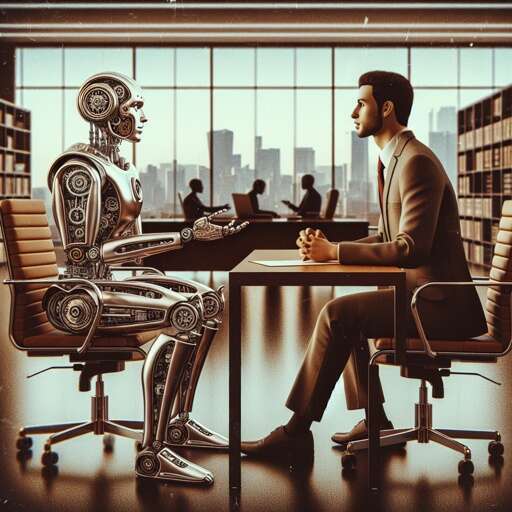
The term “humanoid robot” likely conjures thoughts of some distant, hyper-advanced robotic technology, as portrayed on the big screen in films such as “I, Robot” and “Ex Machina”.
While contemporary examples are not yet quite that advanced, humanoid robots do, in fact, already exist and are even finding industrial applications across several sectors. The last ten years have witnessed huge advancements not only in humanoid robotics, but robotics more widely, and the technology continues to accelerate.

Since 2011, we’ve seen highly advanced quadruped robots designed for speed and tough terrain. Nowadays you will regularly see clips online of Sophia, the expressive humanoid robot that was recently granted Saudi Arabian citizenship; Ameca from British company Engineered Arts; and Boston Dynamics’ Atlas. Exclusively designed to showcase the latest advancements in robotic technology, these humanoid robots are each capable of interesting things. In Ameca’s case its human mimicry, while for Atlas it’s running, jumping over gaps, and performing backflips off ledges.
We won’t see a technological meeting in the middle between Ameca and Atlas until tremendous progress is made in material science to create much stronger, more lightweight robotic bodies, intelligence in perception, analysis and response, mechanical dexterity and so on. However, significant advances are being made in all these areas.
The growing role of AI
One might think that, beyond technology demonstrations, such tools had little real life application. However, these robots, and robots like them, are finding all sorts of practical roles. The recent growth spurt in robotic technology, and its applicability to the real world, can be attributed to another technological leap: the huge progress being made in AI.
Communicating with robots, for example, has long been a challenge. A human could either teleoperate a robot or programme its movement manually, both extremely time-consuming tasks. With the assistance of Generative AI models, humans can communicate in a more natural and time-efficient way, giving engineers a way to generate code from text.
Equally, we’re seeing the integration of AI in robots to expand their capabilities. Take Spot, for instance, one of Boston Robotics’ leading robotic products. The four-legged dog-like robot was originally designed to navigate rough, industrial terrain, like you might find in construction. In 2020 the company entered a partnership with Vinsa, a visual AI solutions firm, after it had begun selling Spot robots with enhanced AI, allowing the robot to conduct thermal imaging, gauge reading, and leak detection scans to highlight abnormalities in things like production lines when conducting site inspections, making Spot far more valuable.
Spot is far more practical in its build than biped, humanoid robots like Atlas. While they are very cool and sci-fi-esque, will they also have practical applications thanks to AI?
Well, this year marked a huge step for humanoid robot adoption, with BMW making a first-of-its-kind deal and employing a number of humanoid robots to join its manufacturing plant in South Carolina. The automaker has acknowledged previous struggles to automate all its processes, with some functions still requiring agile and dexterous intervention that could prove dangerous for human workers.
This is likely to be the first of more to come, since the world’s first humanoid robot factory in Oregon, USA, opened last year. This investment is significant, marking the mass production of humanoid robots for commercial application.
Limitations of humanoid robots
While there has been significant development and investment in humanoid robotics, there is still a long way to go before it is more widely adopted and must overcome some critical barriers holding the technology back.
The first of these are lingering limitations around the technology itself. The tech is only just being rolled out beyond testing facilities and, as such, performance in the real world is still being gauged. The next few years will play a crucial role in proving the technology has a place in industry and will require significant testing and analysis from early adopters before we begin seeing it rolled out more widely.
It’s also worth noting that the technology will always be somewhat limited. Humanoid robots, by definition, are not specialised. The technology has been explicitly designed to carry out an array of tasks, meaning the technology must be agile and adaptable – like humans. Highly specialised robots, such as picking and packing robots, custom-built to carry out the same specific task over and over again, are naturally much more efficient. The role of humanoid robots will inevitably be to bridge the gap between the need for human intervention and the need for higher safety and efficiency, but this is not clearly defined.
Cost is also an issue. While this technology remains in its infancy, it will stay expensive. And not just in terms of upfront cost, but also risk. Entering a mass production will inevitably make investment more financially viable, but this will require a growth in confidence and demand. That takes time.
Overturning stereotypes
There also remains something of a stigma attached to humanoid robots. An enormous amount of science fiction in the 20th Century explored speculative realities in which humanoid robotics are the norm. Often as the antagonists, real or perceived. This has an effect on public confidence in the technology. More practically, humanoid robots are designed specifically do jobs that only humans could do. Whether this is to backfill jobs humans don’t actually want to do, or those that are inherently unsafe, this will inevitably be controversial. An enormous amount of confidence-building work needs to be done to introduce humanoid robots to the workplace successfully.
Security and privacy also remain a concern. Smart phones and social media have already taught us an important lesson about the extent to which new technologies can expose us to entirely new or heightened dangers. We don’t yet know what data humanoid robots will be required to collect, how securely this data will be stored, and what it’ll be used for. Likewise, the prospect of a humanoid robot being hacked is a scary one, particularly when you consider that we may interact with these robots regularly and trust them with tasks in industry and in the home.
Humanoid robots will no doubt have applications in multiple sectors and may prove to drastically improve efficiency and safety, but only after they’ve had time to prove themselves and win the confidence of the public. They may technically be a reality today, but their widespread adoption is still confined to the future. That said, the future is closer than ever, and I’m excited to see humanoid technology develop over the coming years.






